Available Models
My standard models are depicted below
Hunting/utility knives
I have two standard styles of hunting knives. The first is based on a style of colonial knives that were popular in the mid to late 1700s. On occasion this style of knife is referred to as a rifleman’s knife. There are lots of knife styles that fit under the category of rifleman’s knife. While these might fit under that category, the style these knives resemble is at best one type of rifleman’s knife. Typically, these particular knives had no guard, a semi-straight spine, long bolsters on a somewhat narrow portion of the tang , and rounded and jutting butt end. My personal knife, the one that gets abused on an almost daily basis around my home and on bowhunts, is of this type. This is my Abenaki line of hunters. These are full tang knives.
The second standard style of hunting knives is the reversed stag hunter. I call these my Salish hunters. When I lived in Montana I spent some time in the Bitterroot valley as well as visiting the Flathead Reservation. Using my imagination, this is the kind of knife I could see an early explorer carrying as they crossed the Montana Rockies. The handle on these knives is usually stag though I will use ivory and horn. I usually include a wood and metal spacer on the tang. These are hidden tang knives.
These are more recent photos of hunters made in the last 6 months during the Covid pandemic. You will notice that some of them have vitreous enamel on the bolsters. Again, the bolster is milled and then filled with a flux. Then fired at 1500 degrees Fahrenheit. This is not a paint. If I make a mistake I have to grind it off with a diamond drill bit. The colors can be quite varied. The knife directly below had a final coat of titanium oxide added which causes a marbling effect. These are all one-offs, unique and highly durable.
Bowie Knives/Fighters
I have two standard styles of fighting knives. The first is my take on the Bowie knife
and the second is the Salish fighter.
Other Styles (Indo-Persian, Swords, etc.)
Below is a transition sword that attempts to approximate a sword carried by George Washington during the French and Indian War. This is considered a transition sword since it lies between the heavier rapiers and the court swords that became common in the late 18th century and 19th century.

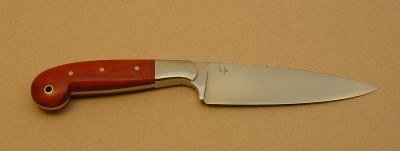
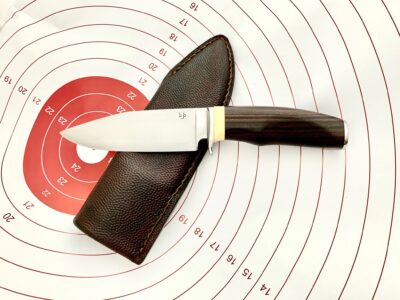



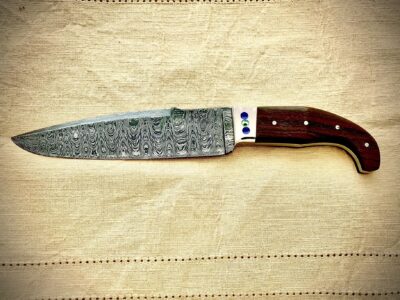
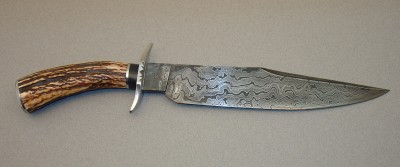

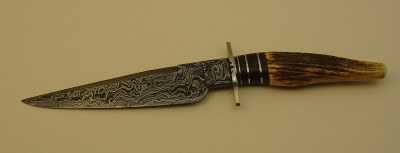



 Dan Petersen
Dan Petersen